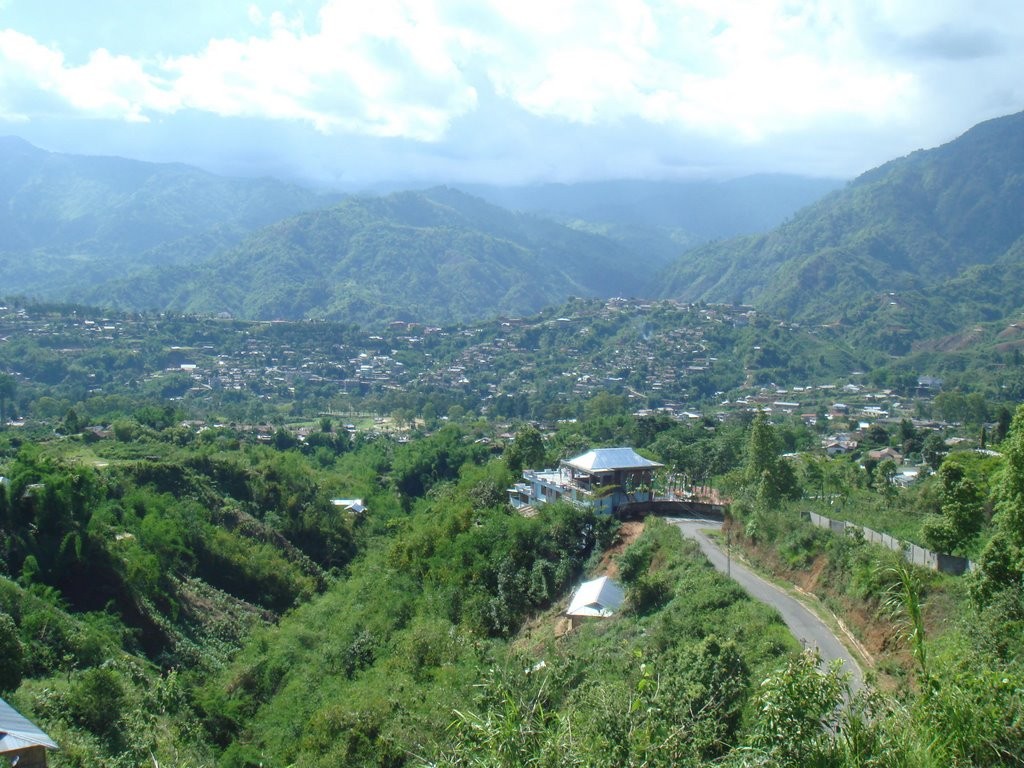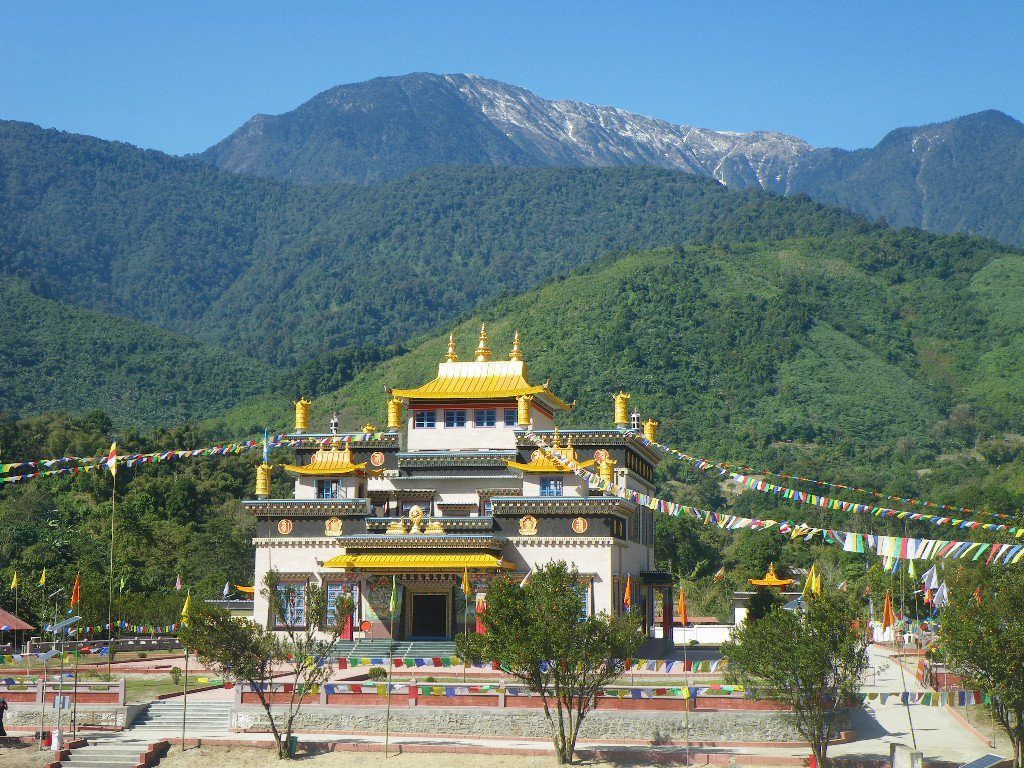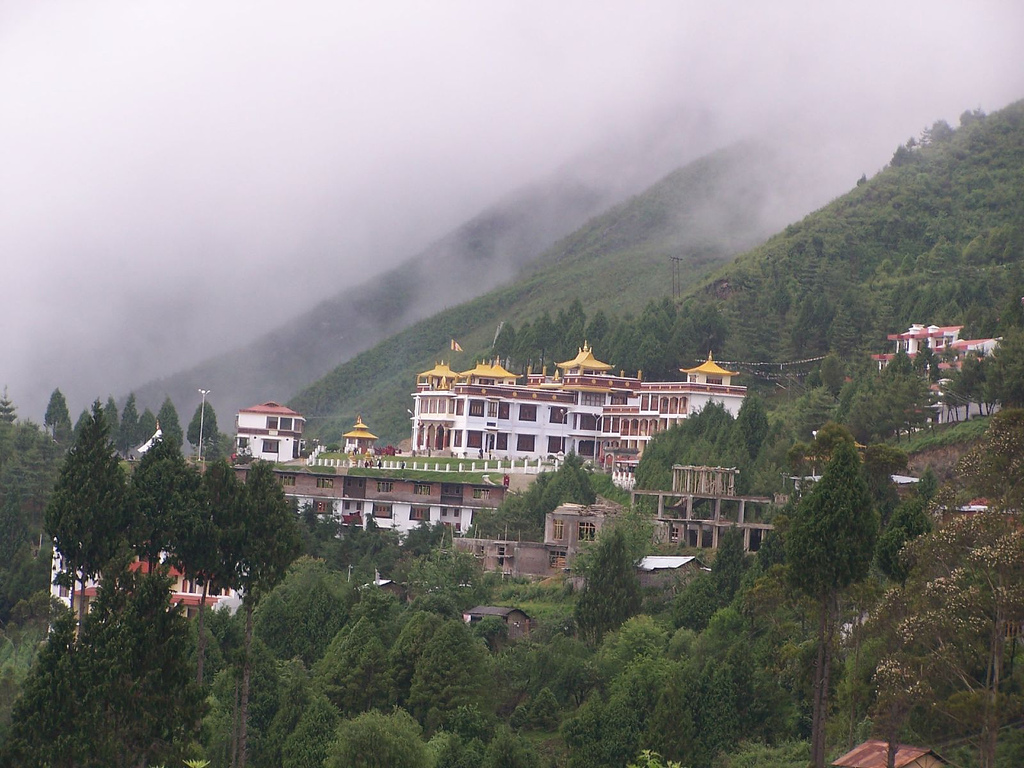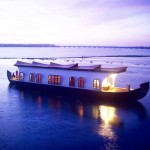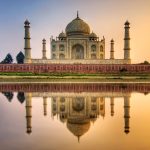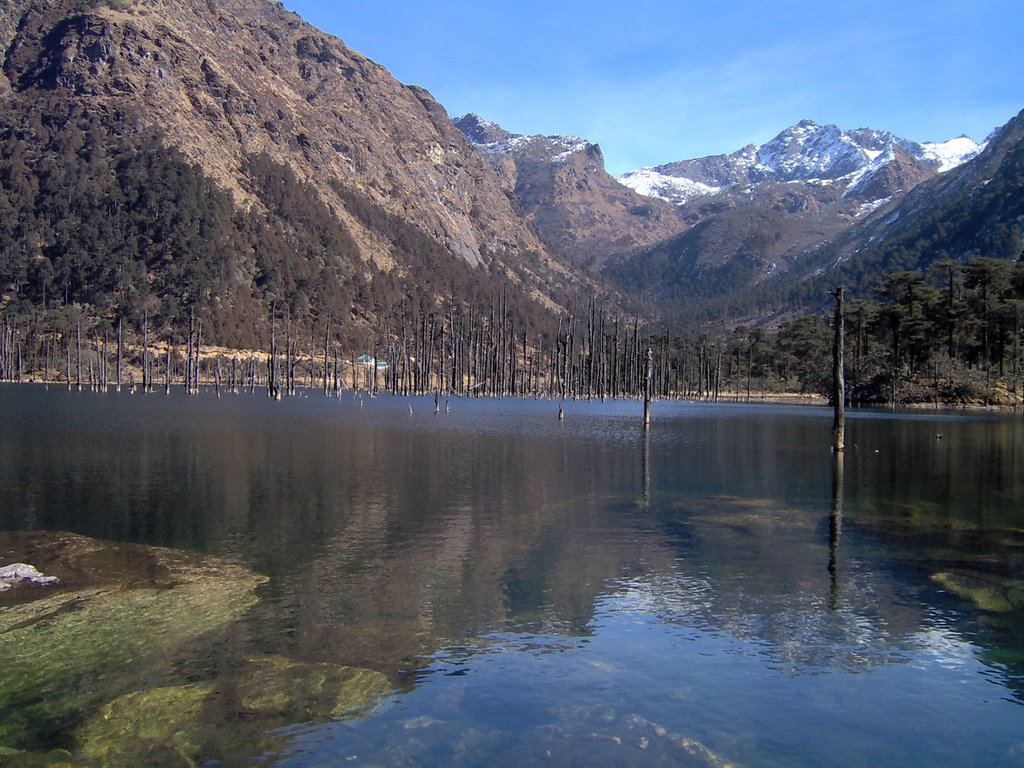
Tawang Tourism and Travel Guide
Tawang Monasteries: The largest Buddhist Monastery in India, Tawang Monastery is situated in Tawang district, Arunachal Pradesh at an altitude of 3,050 m above sea level. The road to this place passes through a scenic alpine forests lush with oak, pine and rhododendron trees.
The monastery is strategically located on a spur surrounded by snowcapped mountains. When Dalai Lame fled from Tibet in 1959, his route into India was through Tawang.
Founded in 1645 by a Lama from Bhutan, this Gelugpa has some 500 resident monks. It was also the birth place of the
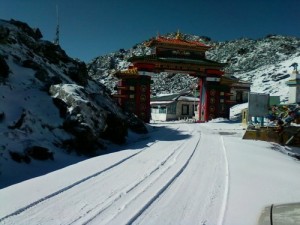
6th Dalai Lama. There is a magnificent 8-m high statue of Lord Buddha. The ancient library inside the courtyard has an excellent collection thangkas and valuable Buddhist manuscripts.
How to reach?
Air: Nearest airport is at Tezpur (Assam)
Rail: Nearest Railway Station Rangapara (Assam)
Road: Nearest Bus stand Bomdila. One can reach Tawang from Bomdila or from Tezpur by bus.
Cuisines of North East India
Assamese Cuisine: Assamese food is mainly based on rice and fish. For dessert, or for those with a sweet tooth, there is a wide range in “pithas” (cakes).
Rice is the staple diet in Assam and is eaten in various forms throughout the day. The Assamese eat a huge variety of rice-based breakfast cereals with milk, yoghurt or thick creamakhoi (puffed rice), chira (chura), muri, komal chaul (a specially processed rice which doesn’t require cooking but just an hour’s soak in cold water) and hurum to name but a few. Normally jaggery or sugar is added but for those who prefer savoury items, salt can be added. Also there are the various kinds of pitha that are prepared from rice powder.
Tawang Authentic Assamese cuisine is bland and yet very delicious. Very little oil is used and practically no spices. All Assamese people are non-vegetarian. Chicken is taboo in orthodox families and there are some, who may not eat meat. But it’s difficult to find anyone who does not eat fish and duck’s eggs. Mustard oil is used for cooking and occasionally clarified butter or ghee.
Arunachali Cuisine: Traditional north-east delicacies, Chinese food and local food are available here. Poeple here generally take non-vegetarian diets. Most of their cuisines include non-vegetarian meals. Apong (local drinks made from rice or millet) is also take by the people here.
Manipuri Cuisine: The traditional Manipuri fine dining was a literally ‘sit-down’ affair with banana-leaf plates. Their love for rice can be seen in every household here. Some take rice with meat, and some others prefer a fish delicacy along with the main dish. In fact Kabok, a traditional speciality, is mostly fried rice with a world of vegetables added in. The Iromba, an eclectic combination of fish, vegetables and bamboo shoots is served fermented.
Meghalayan Cuisine: The Meghalayan cuisine is heavily tilted in favour of meat, particularly pork. Jadoh – a spicy dish of rice and pork is eaten almost any time. Besides, the local pork delicacies cooked Khasi-style, Shillong is also the Mecca of authentic Chinese food. Kyat, the local brew made from rice, adds zing to all the local celebrations. You can taste it at any of the bars spread all over Shillong Meghalaya.
Mizoram Cuisine: The people of Mizoram are basically non-vegetarian and love meat. The food is not spicy and is cooked in such a way that the nutritive value is actually retained. The locally made wine is a great favourite. “Zu” (tea) is a popular drink. Both men and women are fond of smoking.
Sikkimese Cuisine: Sikkim has its own unique dietary culture with specific cuisine and food recipes. You can get a variety of food in Sikkim, but specialities like the Tibetan Thupka and Momos are very popular here. A beverage to be sampled is the local ‘Tchang’, a beer made of millet and served in a bamboo mug. You can find this at small restaurants serving Sikkimese cuisine.
Sikkimese are essentially rice-eaters. Alcoholic drinks are popular both amongst men and women. Various traditional fermented foods and beverages is very common. Beef eating is common amongst the Bhutias. Some of the common traditional cuisine with their food recipes are – Momos, Gya Thuk or Thukpa, Ningro with Churpi, Gundruk, Phagshapa, Sael Roti.
Tripuri Cuisine: The large Bengali community in Tripura makes for a non-vegetarian favoured cuisine, with fish being an integral part of the menu. Most of the household here serves authentic Bengali delicacies.
Tawang The Festivals: Festivals form an essential aspect of Socio-Cultural life of the people of Arunachal Pradesh. As a matter of fact festivals of Arunachal Pradesh reflects the real culture and tradition of the people of Arunachal Pradesh.
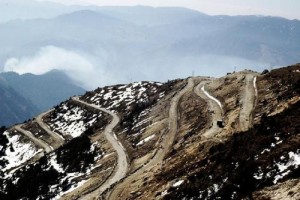
Every social community of Arunachal Pradesh celebrate number of festivals. The festivals of Arunachal Pradesh are generally – agricutural, religious and socio-cultural, which give them ample opportunity to enjoy and entertain freely. The festivals are the occasions for people to relax, to enjoy, to dance and eat and drink.
Agriculture being the basic means of livelihood in Arunachal, the festivals having connection with agriculture are celebrated in bigger scale either to thank God for the providence or pray for good harvest. The ritual part of each festival is performed by the priest and other arrangements of the festivals are done by the people in a community basis. Animal sacrifice is a common ritual in most of the festivals in Arunachal Pradesh. Throughout the year festivals are celebrated by one or the other tribes. Because of this fact, Arunachal Pradesh may also be called the land of festivals.
Choekhor: After the crops are sown and at the time of little agricultural activity, in the seventh month of lunar calendar, a rite known as “Choekor” is organised in the villages by the entire village community with the aim of offering supernatural protection to the crops sown, for good harvest and to drive away evil spirits.
Losar: The New Year festival, called “Losar”, is perhaps the most important festival of Tawang District in Arunachal Pradesh. The Losar festival of the Monpas is their new year of festival. On this occasion people clean out their homes to usher in the new year and to discard the old. It mostly falls in the last part of February or early part of March and is celebrated with lots of fun and festivity, which lasts for about 8 to 15 days.
Torgya: Torgya is a monastic festival held every year for three days starting from 28th day of the eleventh month of the lunar calendar, which generally falls in the last part of January. In order to drive off evil forces and to ward off any natural calamity. Monastic dances are performed for 3 days during Torgya festivals.
Monpa Festival: Monpas have a colourful festive heritage. The festivals are related with agricultural practices and religious events.
Saga Dawa: The 4th month as per lunar calendar is regarded as the holiest period for the Buddhists. This month marks the birth of Lord Buddha, his attainment of supreme enlightenment and his passing into the state of nirvana. It normally falls in the month of May. This occasion is celebrated with much fun and gaiety.
TawangTamladu Festival: Another important festival is Tamladu, essentially celebrated by the Digaru Mishmis tribe. During the festival, prayers are offered to the God of Earth and the God of Water for protection against natural calamities. The supreme- Lord Jebmalu, is worshipped and welfare of human beings, the standing crops and domestic animals.
Sangken festival: Sangken festival, is an occasion to bathe the images of Lord Buddha ceremoniously. This also heralds the new year and people sprinkle water on each other as a sign of merriment.
Khan Festival: Another festival is the Khan festival, an occasion for the reunion of the people. Besides the usual festivities, the significance of the festival lies in the ceremony whereby the priest ties a piece of wool around everybody’s neck. The belief is that the enchanted thread will bring good luck to each of them.

